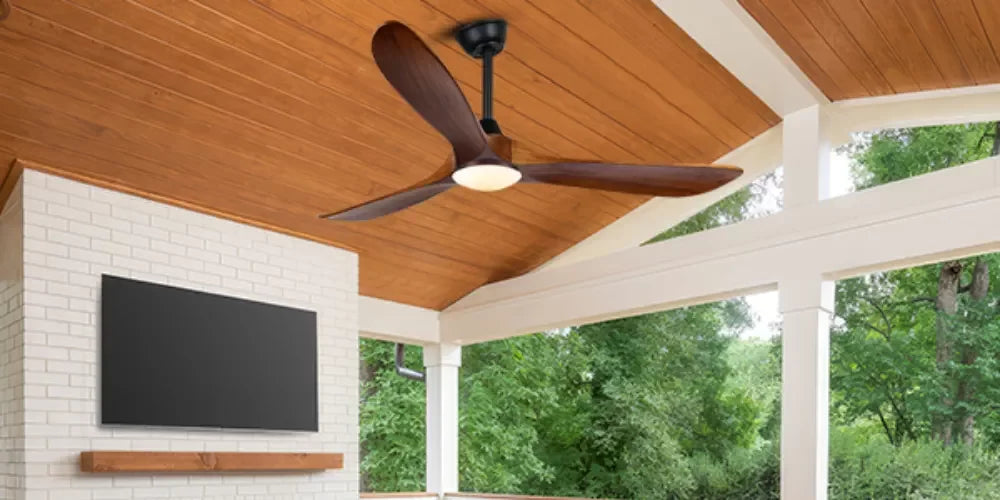Vaulted and sloped ceilings create a sense of openness and grandeur in a room. However, they also require special considerations when choosing and installing a ceiling fan. This guide will walk you through everything you need to know to select a fan that is safe, effective, and perfectly suited for your unique space.
Can Any Ceiling Fan Be Used on a Sloped Ceiling?
The short answer is yes, most ceiling fans can be adapted for use on a sloped ceiling.
- Built-in: The majority of modern ceiling fans come with a canopy and mounting hardware that can accommodate a slope of up to 30 degrees.
- Optional: For ceilings with a steeper pitch, you will need to purchase a separate sloped ceiling adapter, also known as an angle mount canopy kit. These adapters are designed to allow the fan to hang straight down, ensuring it operates smoothly and without any wobble.
Shop Ceiling Fans for Sloped Ceilings ►
How do I calculate the angle of a sloped ceiling?
1. Measure the Rise
Your ceiling's "rise" is the total vertical height of the slope itself. To find it, you will calculate the difference between the ceiling's highest and lowest points.
2. Measure the Run
The "run" is the horizontal distance your sloped ceiling spans. You can find this by measuring the length on your floor. Identify the spot on the floor that is directly below the highest point (peak) of your ceiling. Measure the distance across the floor from the base of the wall to that spot. This measurement is your ceiling's horizontal run.
3. Calculate Your Pitch and Determine the Slope Angle
The pitch is the ratio of the "rise" over the "run". Use the graphic below to determine the corresponding slope angle and the minimum downrod length.

4. Check the Fan Height
Ideal distance from floor to fan blades is 7 to 9 feet. After you determine your minimum downrod length, double-check that it also places your fan in this optimal height range for the best air circulation. If your ceiling is exceptionally high, you may need an even longer downrod than the minimum listed to achieve this.






